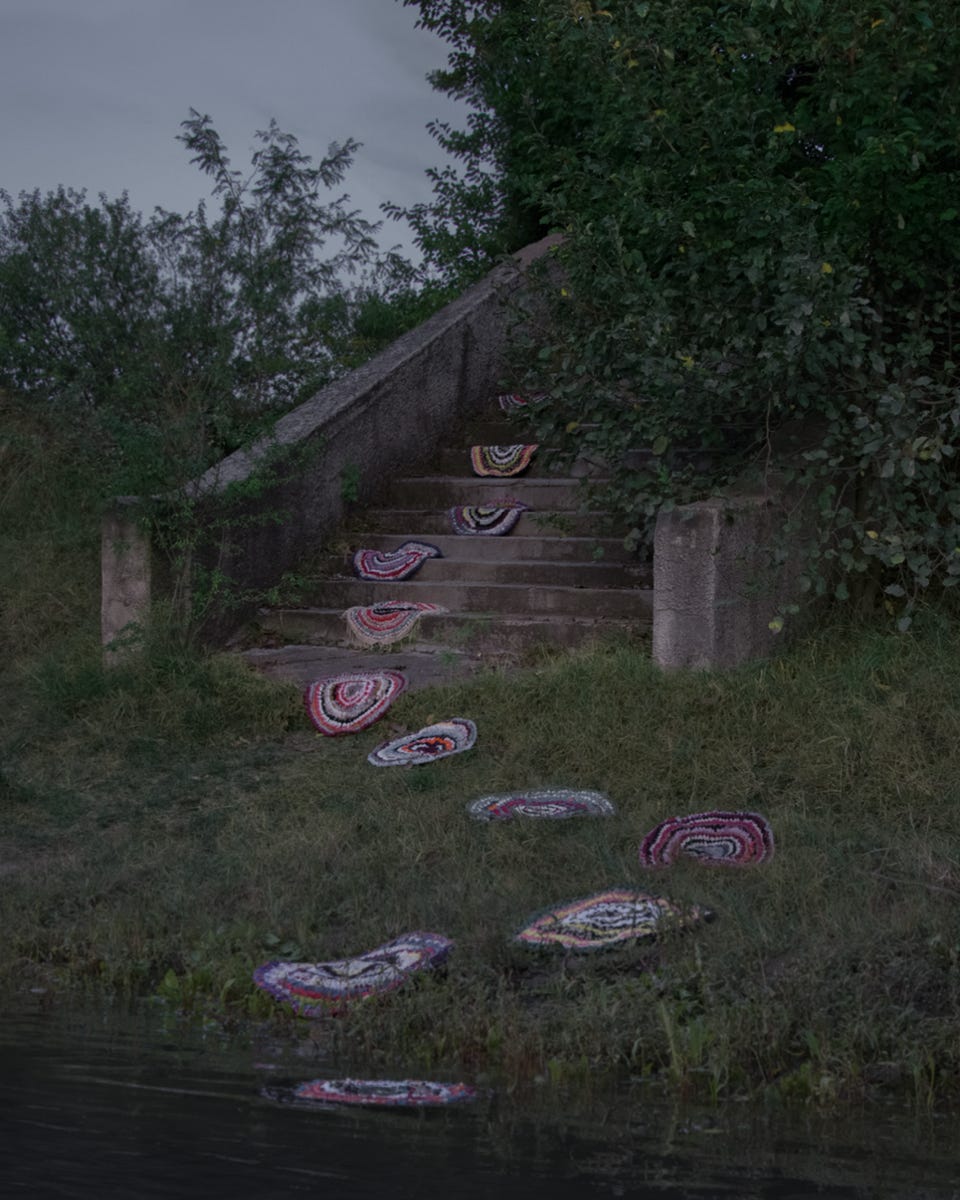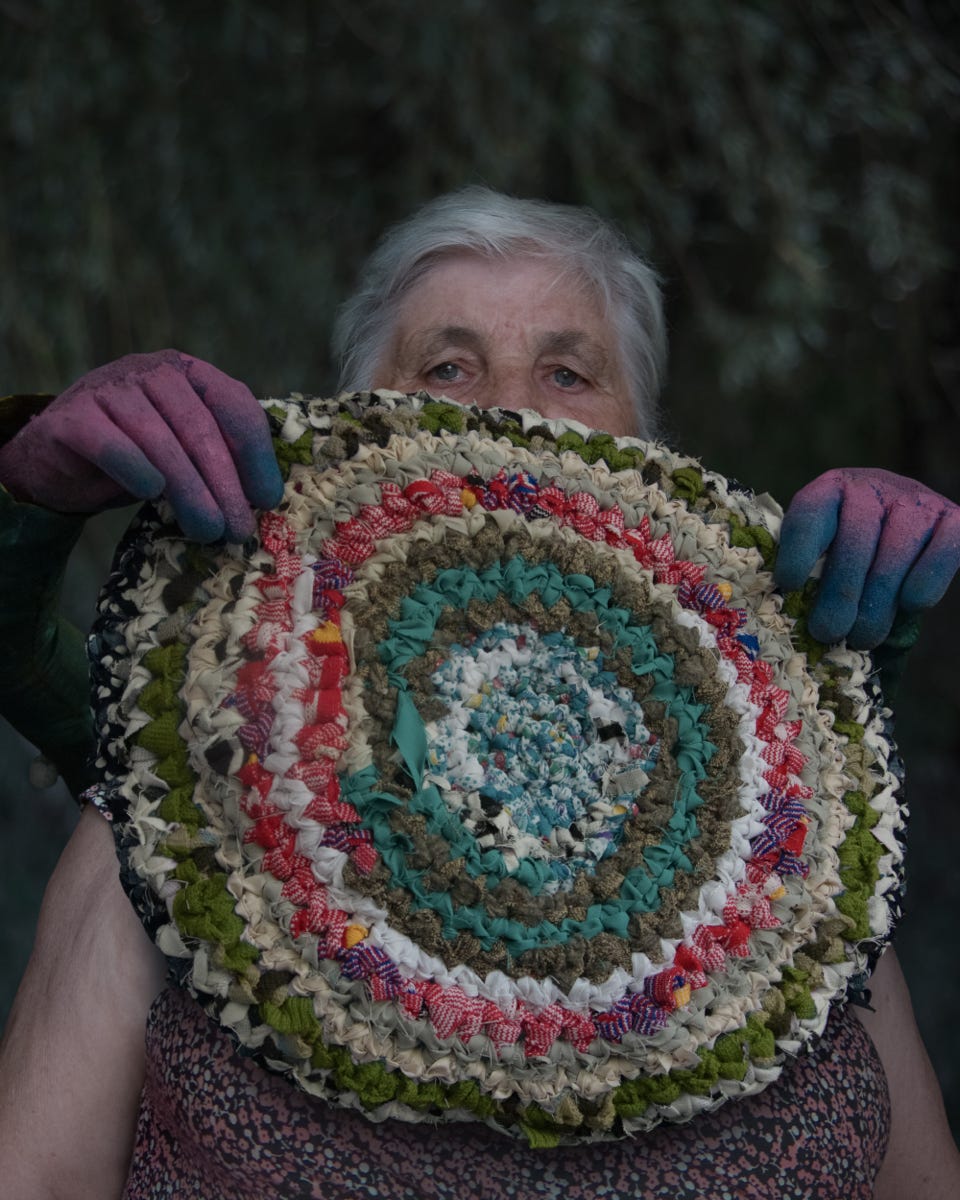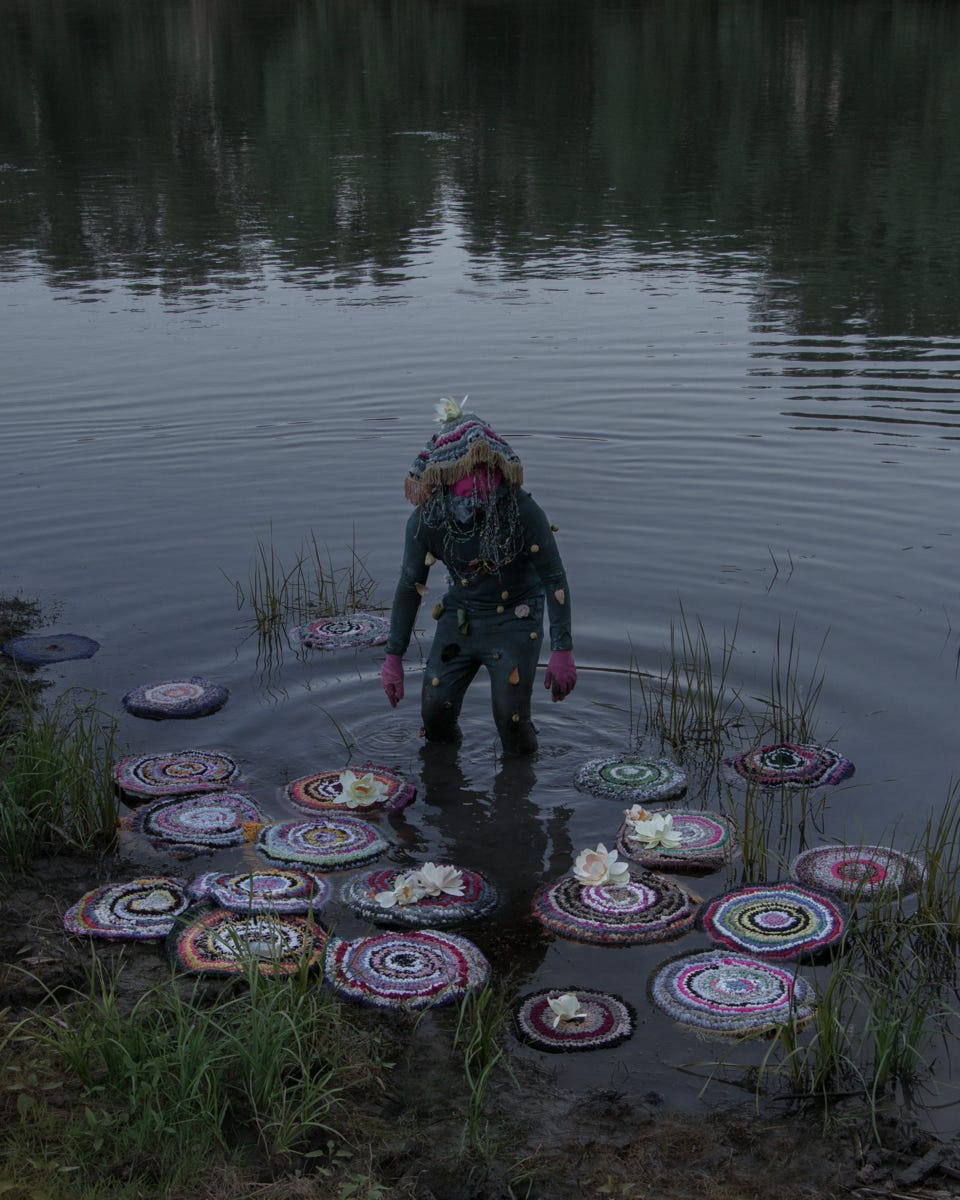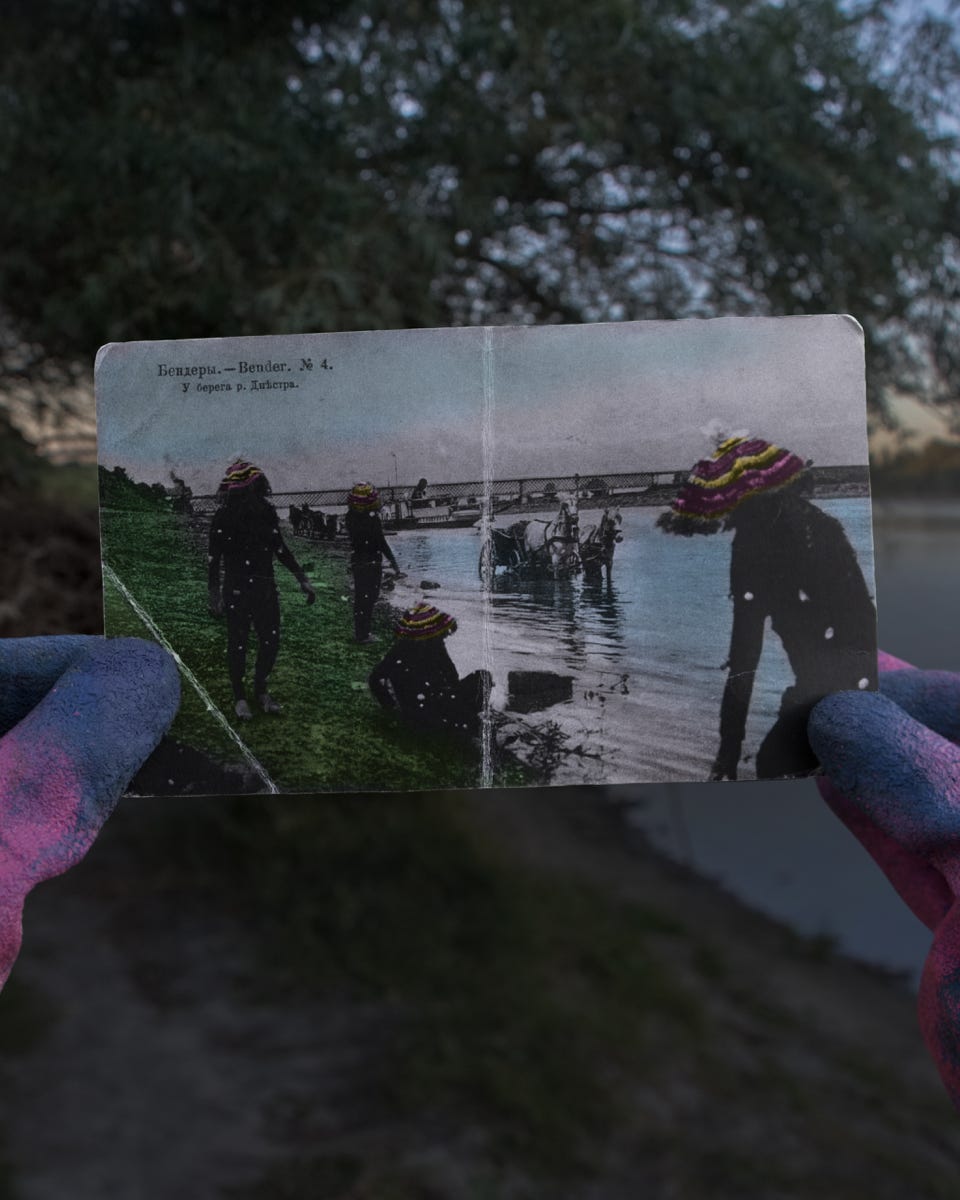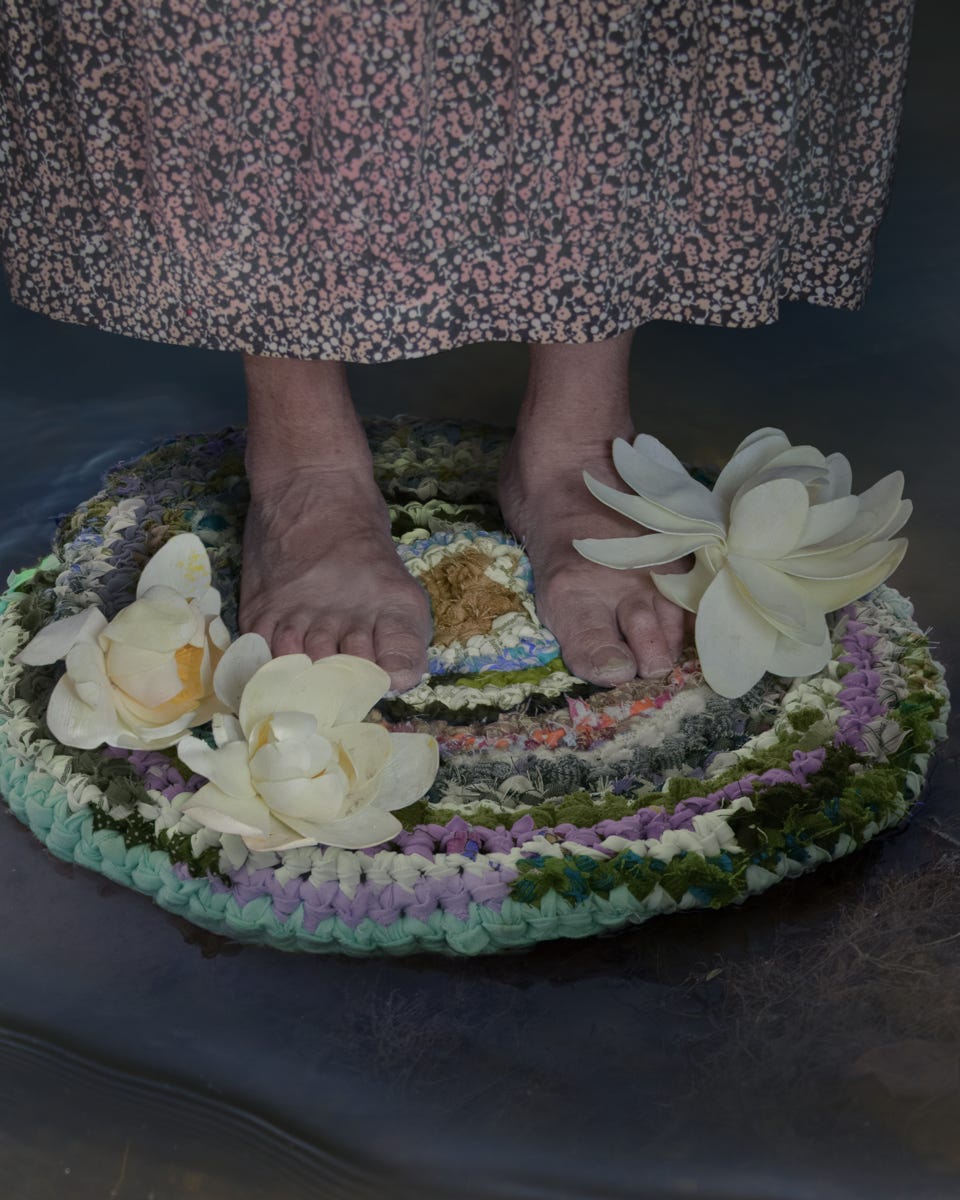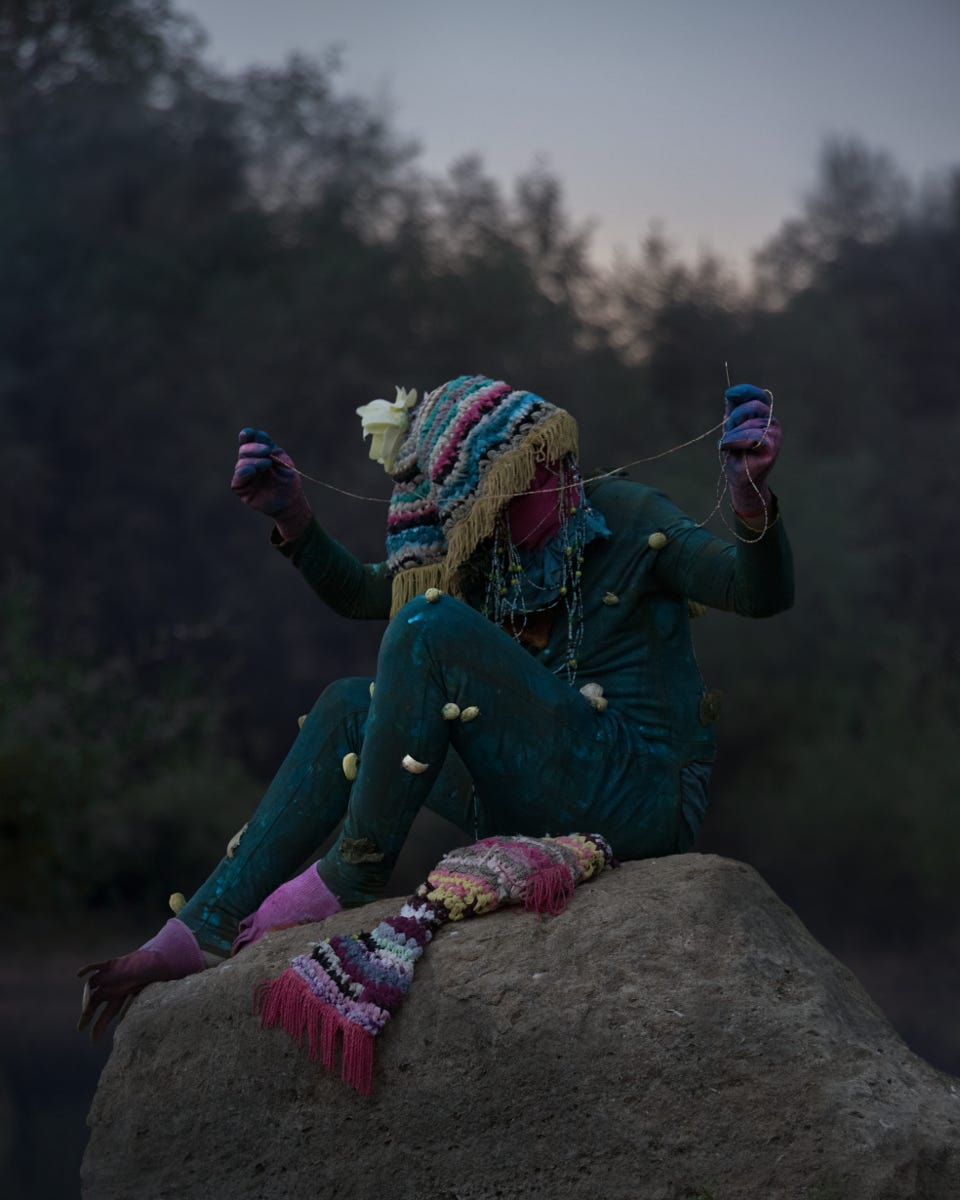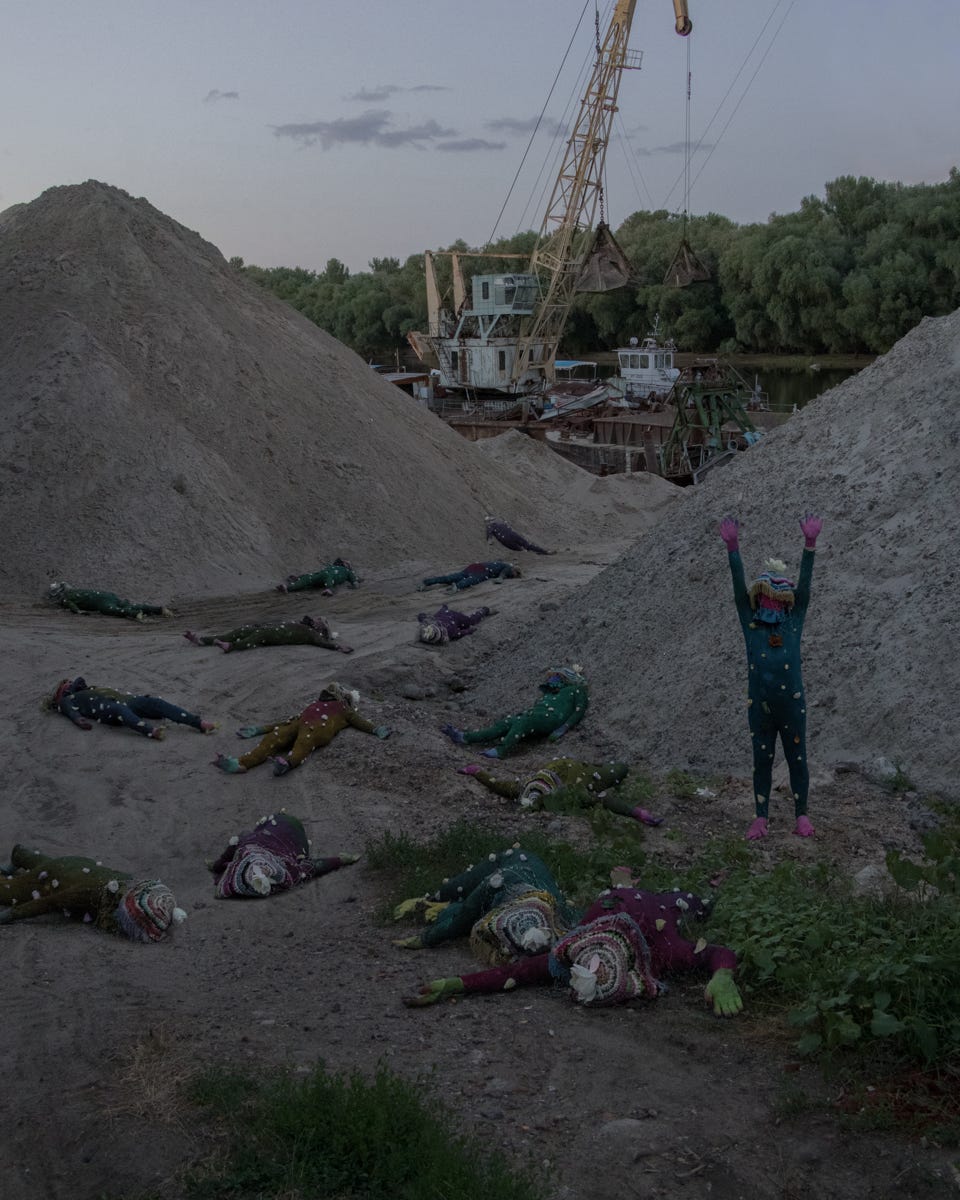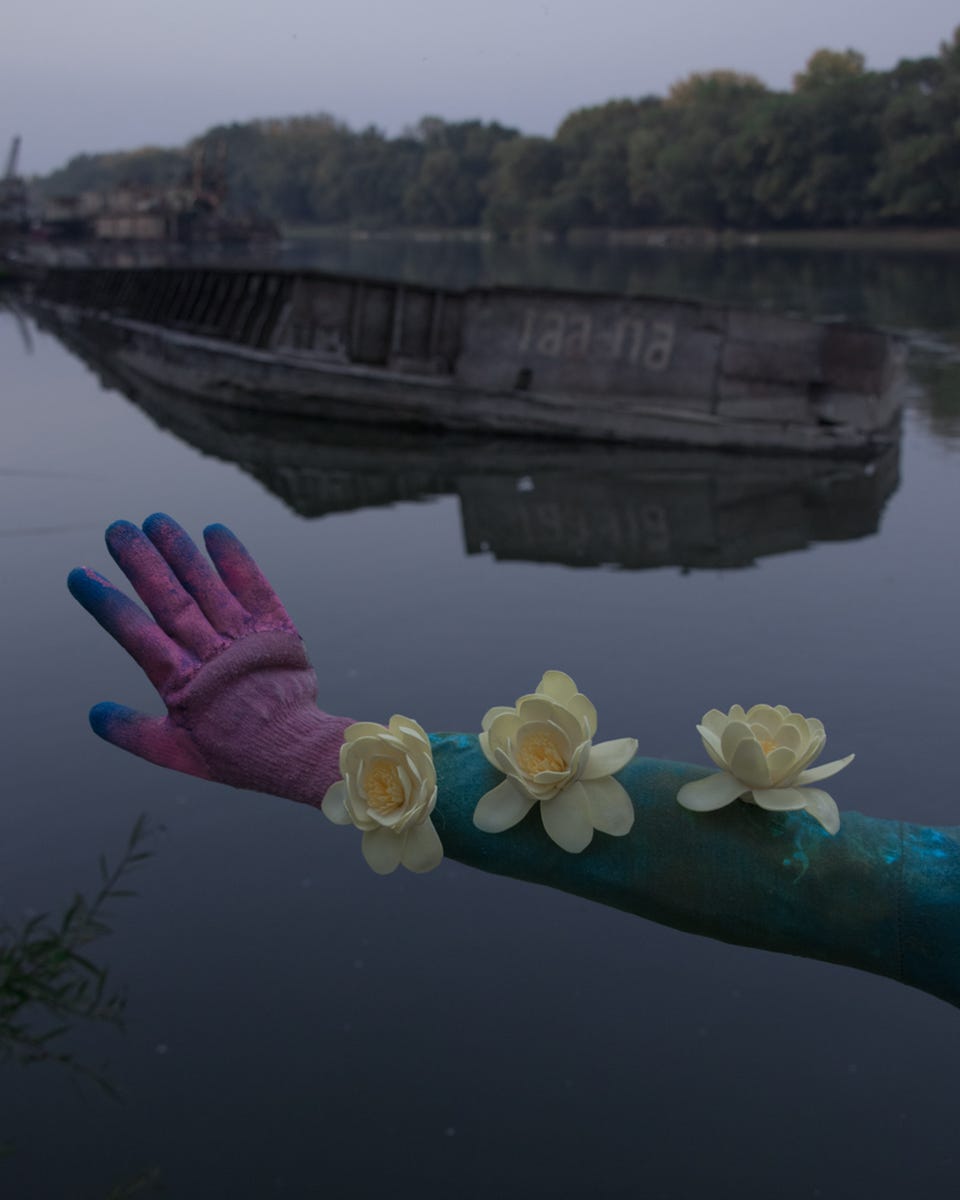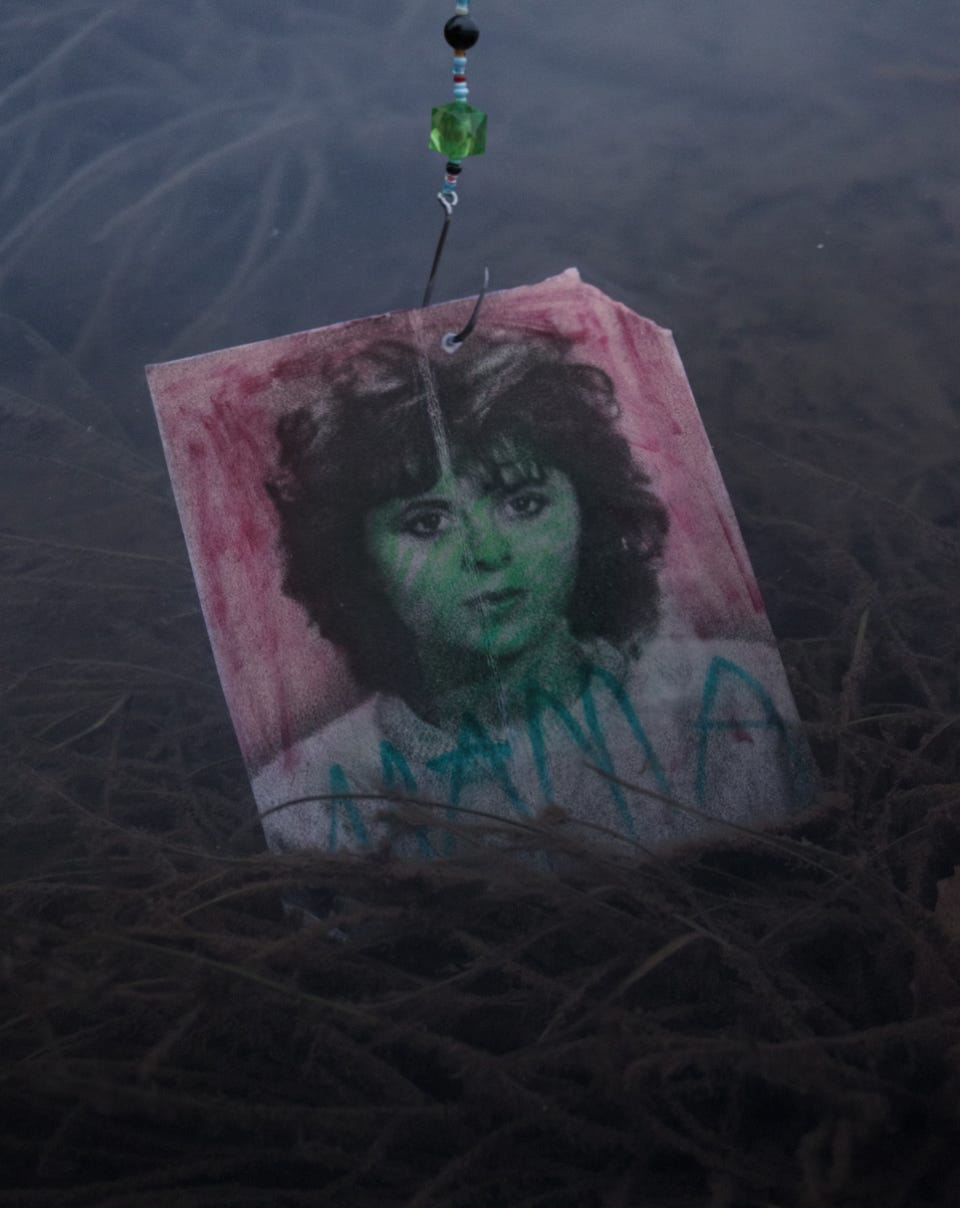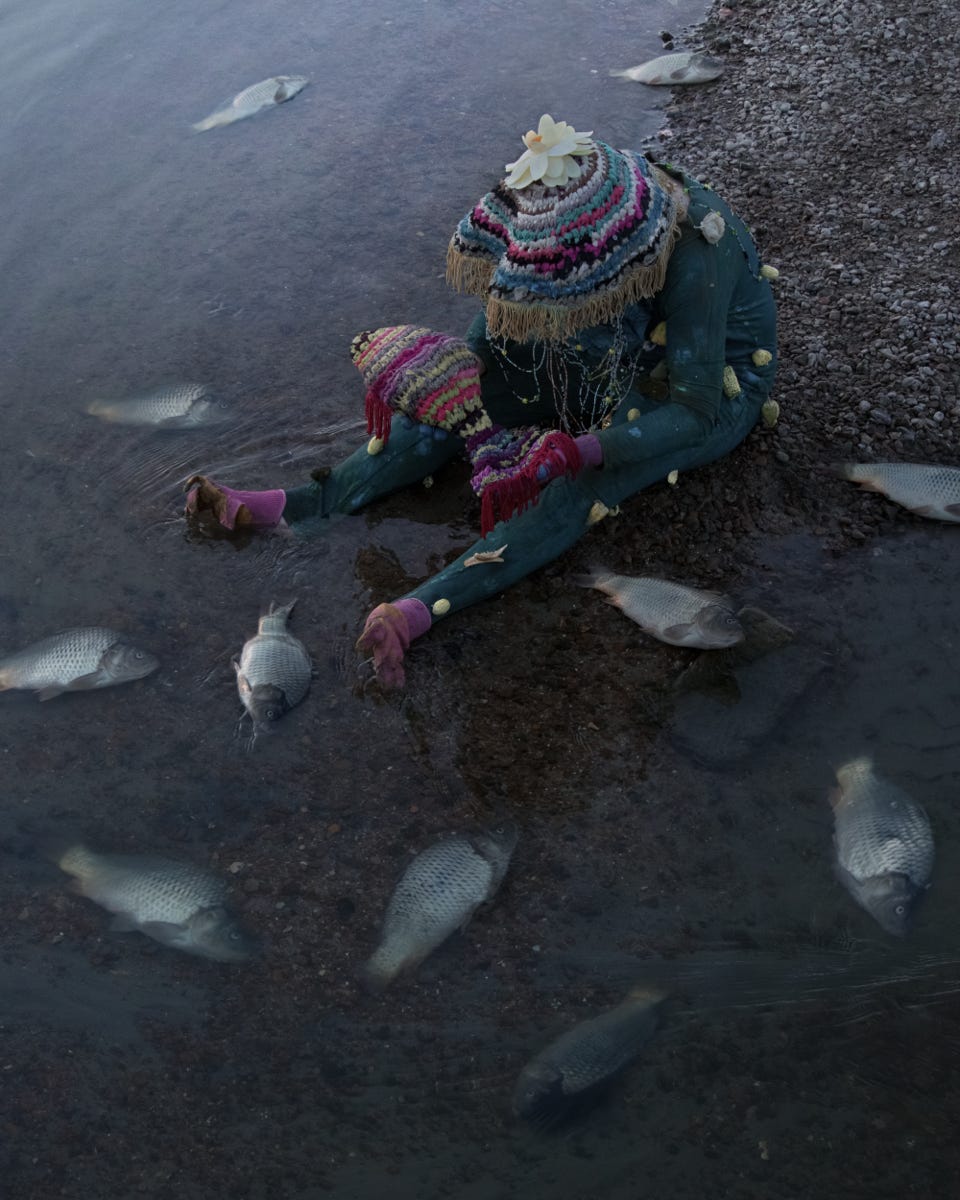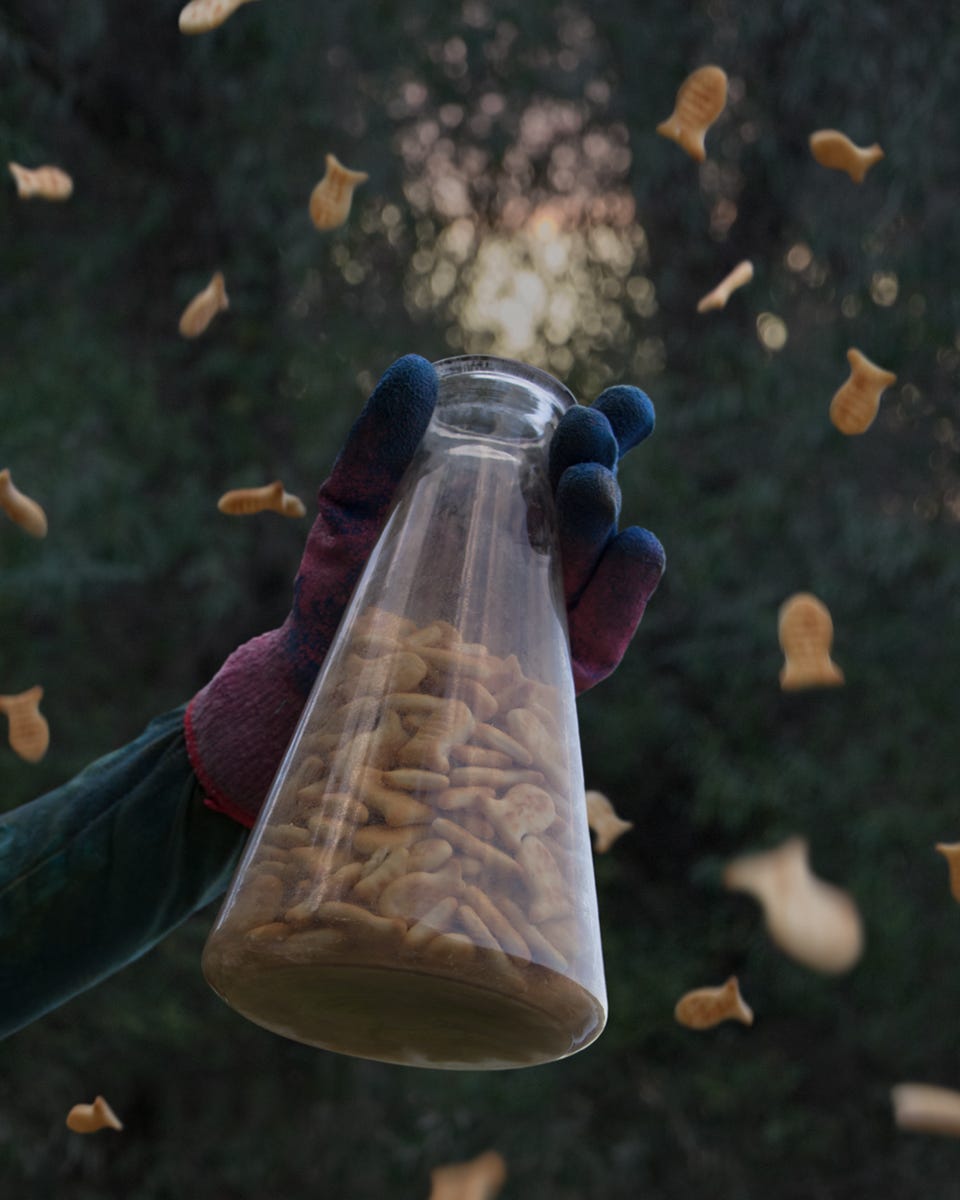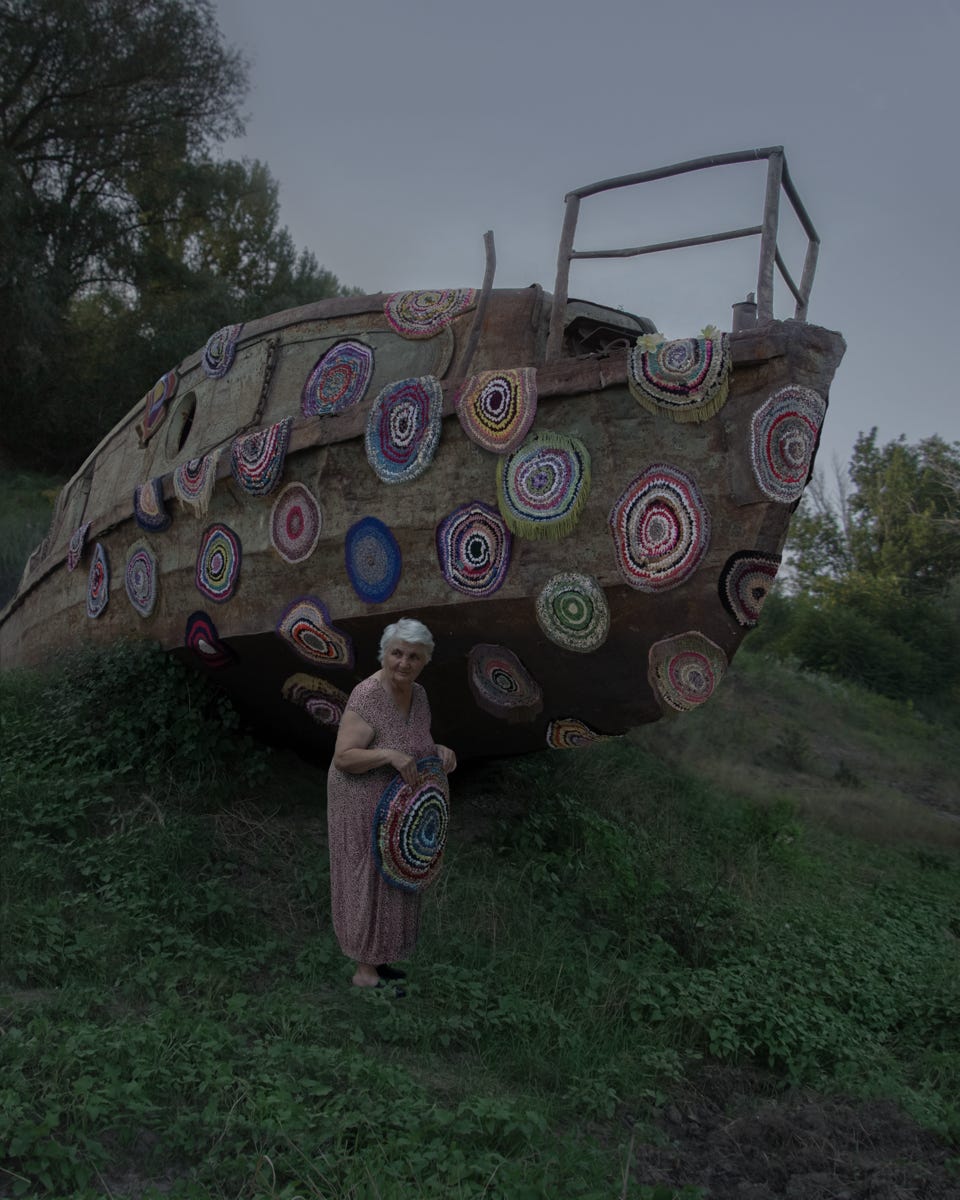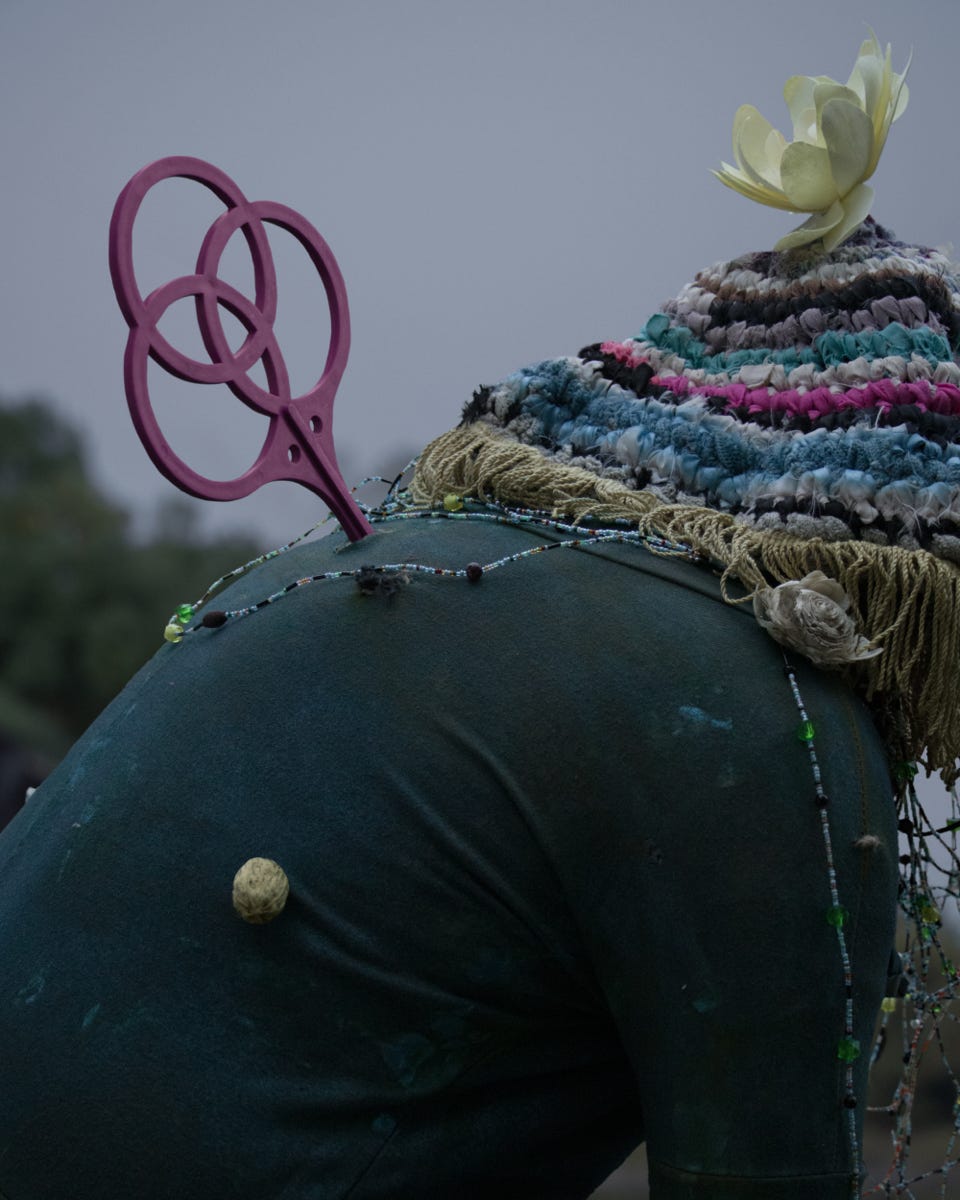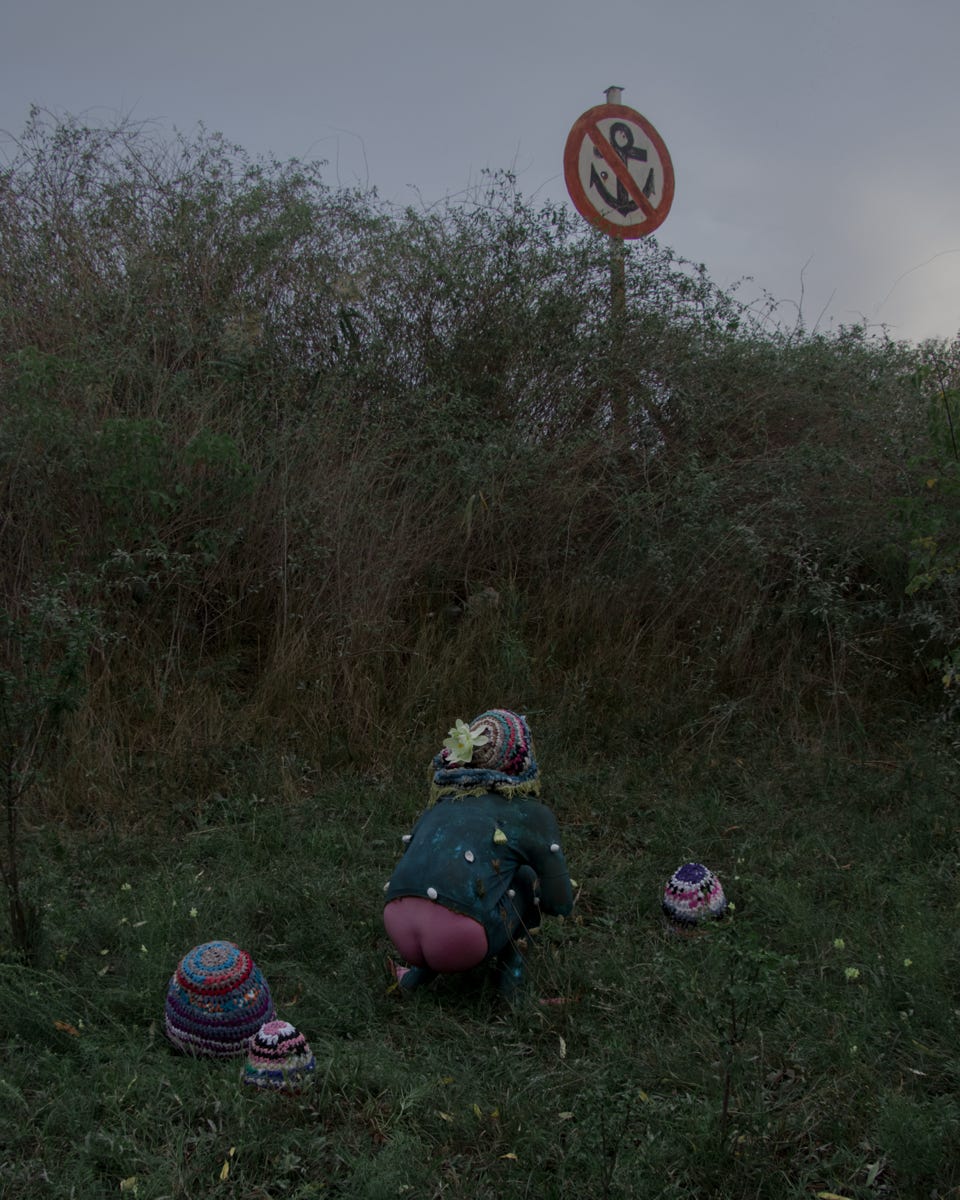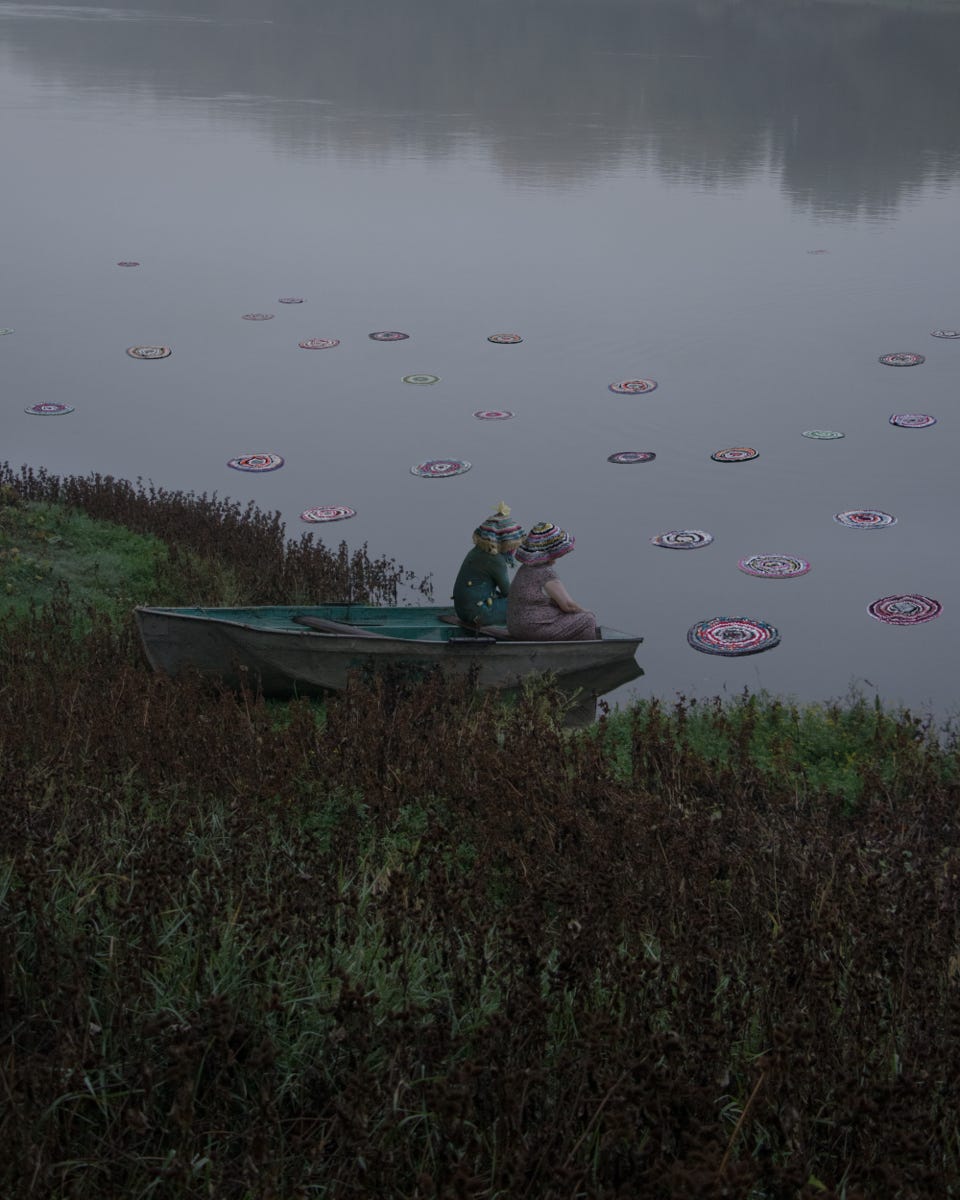Magical water lilies, an amphibian creature, a former scientist looking like a babushka and a crochet rug take place in the heart of a river. This is a setting and the protagonists of the fable told by the Moldavian duo Dutca-Sidorenko.
In the form of a visual tale, the artists’ duo dedicate their joint work to the Dniester River, which is rises in the Carpathian mountains and flows into the Black Sea. Carolina Dutca, who is from Bender, a small town near the river, wants to evoke various issues related to the river, such as excessive sand exploitation, abandoned ships, floods that erode the water and waste dumps. While researching the history of Transnistria, a Moldavian region bordering Ukraine, the artists discovered that the White Water Lily was an endangered species.
Their meeting with Elena Nikolaevna, a former biology teacher, fascinated by her father’s childhood stories about a vanished amphibian world, encouraged them to recreate a new legend, that of 'Apă'. Together they invent a story, where multicolored embroidered rugs, extravagant costumes worn by extras, synthetic water lilies, and stranded frogmen are part of a battered and deserted nature. Elena Nikolaevna then becomes the protagonist of her own story with the amphibious creature she has named Apă, “water” in Moldavian. The former biologist collects the waste that pollutes the waters of the river with Apă to make ‘magic’ rugs.
The result is a set of 15 surreal, burlesque, joyful and dreamlike photographs, in which a set of characters and scenes unfold the tradition of popular theatre.

















